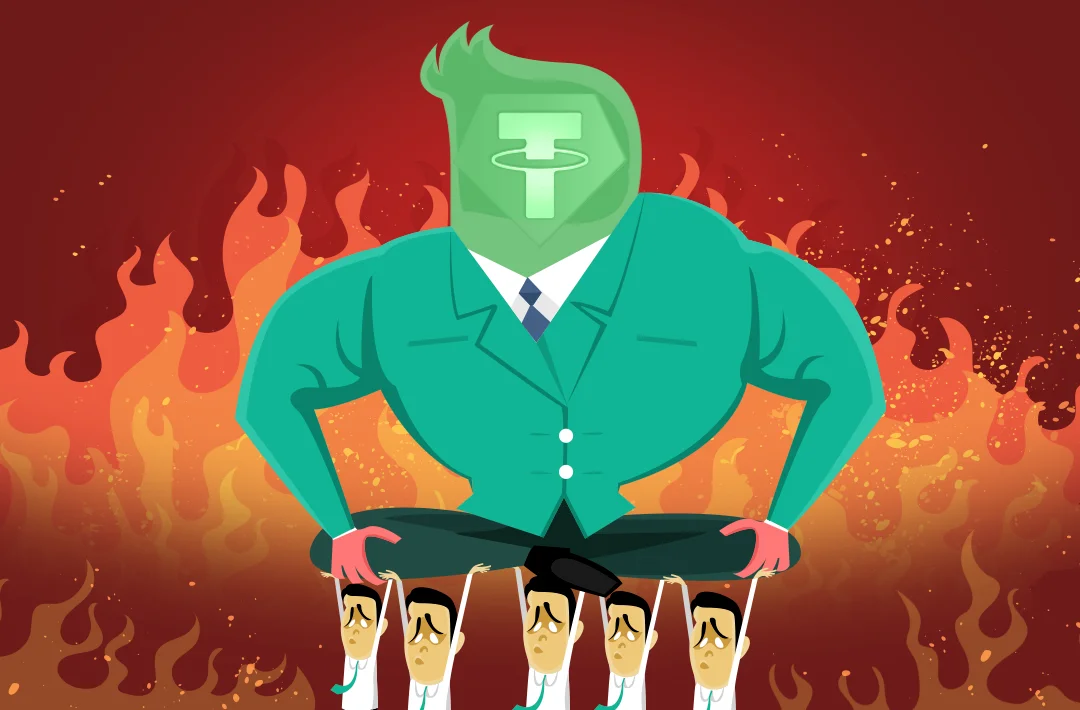Deutsche Bank says there are risks of Tether’s monopoly on the stablecoin market
The USDT issuer responded by saying that the report lacked sufficient data to support such claims

10.05.2024 - 09:40
230
4 min
0
What’s new? Deutsche Bank has said that most stablecoins are doomed to lose their peg to fiat currencies. The analysts reached this conclusion by extrapolating data on exchange rate movements of 334 fiat currencies over the past more than 200 years to the stablecoin market. Of the currencies studied, only 14% successfully survived, and only because they were trusted, backed by reserves, and operated in tightly controlled systems. Experts emphasized that these factors are lacking in many major stablecoins.
What else is known? The bank explained that it decided to compare stablecoins to fiat because of their similarities: both asset types require sufficient reserves and confidence in the reliability of issuers and are subject to speculative influences. In addition, most stablecoins and fiat currencies are dependent on or track the US dollar.
At the same time, analysts reminded that fiat and stablecoins serve different purposes: the former are used by the government to support a country’s economy, the latter by private companies to generate profits around the world.
Stablecoins pegged at a 1:1 ratio to fiat currencies (usually the US dollar) are the main channel for cryptocurrency trading, serving as a safe haven from the high volatility of the digital asset market. The largest stablecoin is USDT from Tether, with a capitalization of over $110,86 billion.
Although its market share has fallen by 13% since the beginning of the year, it still accounts for an impressive 69%, and USDT overtakes bitcoin by $13 billion in daily trading volume at the time of writing.

Kaiko: The share of USDT on centralized exchanges has fallen by 13% since the beginning of the year
Analysts attribute this to increased competition
Analysts said that Tether’s monopoly on the opaque and speculative stablecoin market could have serious consequences. They recalled that the company was previously fined by the US Commodity Futures Trading Commission (CFTC) for providing inaccurate reserve data. They also pointed to the derivatives market’s dependence on the USDT, which could increase losses and disrupt leveraged transactions if the peg is lost.

Tether will start monitoring the USDT secondary market to prevent illegal transactions
Monitoring will be carried out using the company’s Chainalysis tool
Tether began publishing quarterly reports on its reserves when it entered into agreements with the CFTC and New York State authorities in October 2021, the company paid a $41 million fine as part of the settlement.
Tether commented on the Deutsche Bank report, saying it lacked clarity and substantial evidence. The report is based on “vague assertions rather than rigorous analysis. While it attempts to forecast the decline of stablecoins, it fails to provide concrete data to support its claims,” Tether representatives emphasized.
Earlier, Tether reported a record net profit of $4,52 billion for the first quarter.
Useful material?
Market
1,5 million addresses have already left applications
Oct 31, 2024
Business
The company began investing in bitcoin in 2020, and since then, the value of its securities has risen by 1700%
Oct 30, 2024
Mining
The Deputy Energy Minister explained that in deficit regions, it is impossible to allocate large capacities for industry enterprises until 2030
Oct 30, 2024
Market
Customers will also be able to withdraw funds to bank accounts using cards
Oct 30, 2024
Mining
Blockware noted increased investor interest in this type of asset due to inflation concerns
Oct 29, 2024
Market
They will provide a single benchmark price for crypto assets across time zones in Asia
Oct 28, 2024









 Telegram
Telegram  Twitter
Twitter